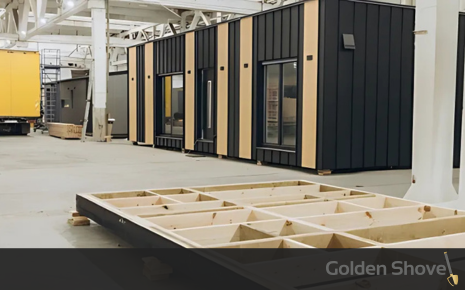An Affordable Path to Housing

5 Aug 2025
News, Client Feature Article
This article originally appeared on and was written for Grow Wabash County by Golden Shovel Agency.
Modular housing is too often misunderstood. When people hear the word “modular,” many picture a mobile home or a shipping container unit. But that’s not what’s on the table. True modular homes are built to the same codes, undergo the same inspections, and are constructed on the same foundations as site-built homes. And in many cases, they’re built stronger, delivered faster, and cost far less.
For communities and developers facing tight timelines, zoning constraints, and shrinking budgets, modular construction presents a strategic opportunity, not a compromise.
Modular Means Permanent, Customizable Housing That Appreciates Over Time
A modular home isn’t a trailer. It isn’t a manufactured home. It’s not an RV. It’s a real home, permanently affixed to a foundation, constructed to local and state codes, and inspected on-site, just like any stick-built structure. It can be financed, appraised, and resold just like traditional real estate. It appreciates in value. And it doesn’t come with the stigma or structural limitations of mobile housing.
The construction process is different — more efficient, more consistent, and far less wasteful. About 80 to 90 percent of the structure is built in a factory-controlled environment, then transported in sections to a permanent site where it’s assembled on a poured foundation. The result is a home that’s often stronger than traditional builds due to tighter seams and reinforced materials needed for transport.
Lower Construction Costs Don’t Mean Lower Quality
On average, building a modular home costs $100 to $200 per square foot, compared to $200 to $400 per square foot for traditional custom builds. That price advantage can translate to as much as 20 percent in total project savings without compromising performance. Energy efficiency is built in. Weather delays are minimized. Material waste is significantly reduced. And construction timelines are shortened by weeks or even months.
Because most modular builds occur in parallel with on-site foundation work, total project time can drop by 30 to 50 percent. That’s especially valuable for developers looking to expedite housing delivery in high-demand markets or for homeowners seeking to transition from rentals to long-term equity.
Click here to view the full article.
Need more homes in your community? Download this free whitepaper for strategies on how to build workforce housing faster. Interested in having similar articles written for your organization? Click here to learn more about Golden Shovel Agency's Content Creation Services.
More Topics






